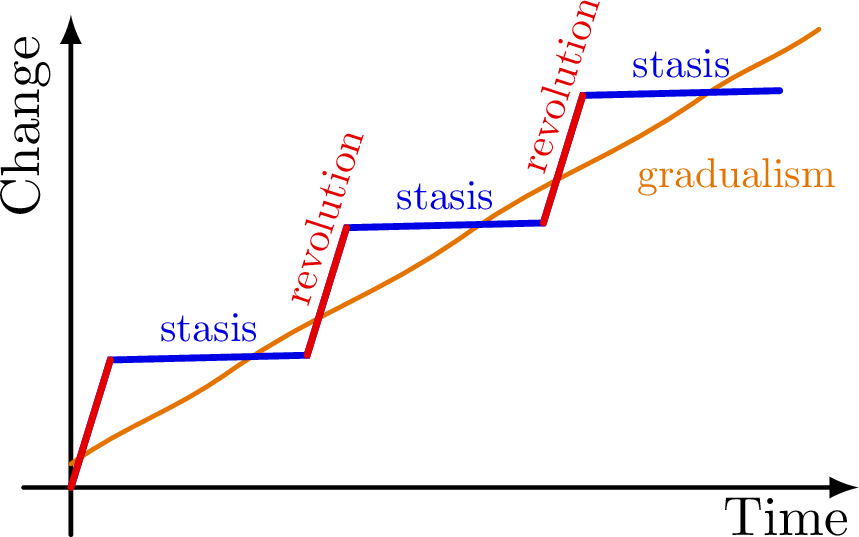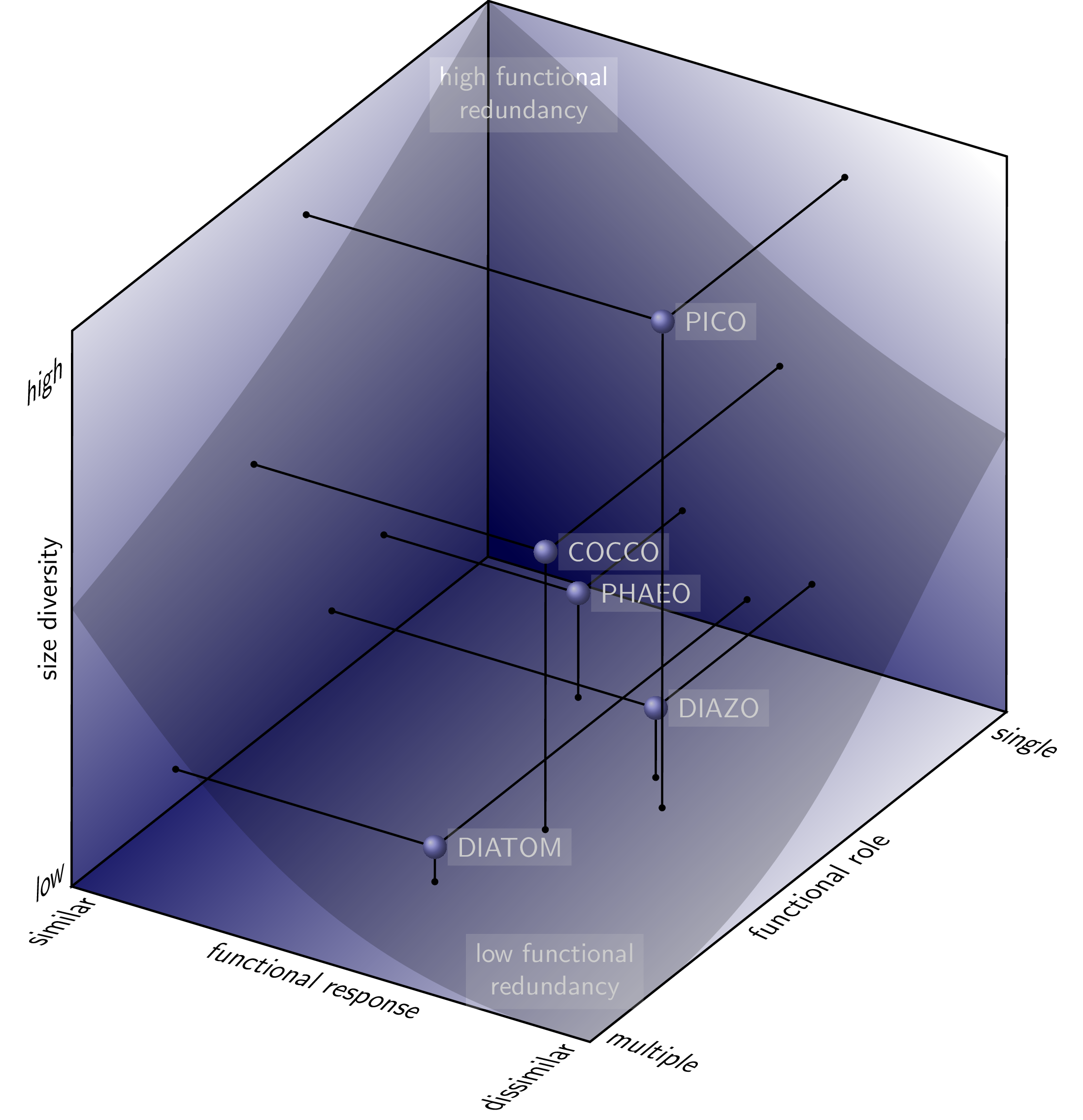Intuitive graph of evolutionary changes over time, comparing gradualism (constant, small changes) versus punctuated equilibrium (long periods of stasis with occasional short periods of rapid change), sometimes summarized as “evolution versus revolution” or “creeps vs. jerks”. Inspired by Robert Sapolsky’s lecture on Human Behavioral Biology. Also see Sapolsky’s behavioral diagram.
The structure of punctuated equilibrium is similar to Thomas Kuhn’s idea of how science progresses with sudden paradigm shifts as opposed to slow, steady improvements of models (see the Stanford Encyclopedia of Philosophy).
Edit and compile if you like:
% Author: Izaak Neutelings (December 2020)\documentclass[border=3pt,tikz]{standalone}\usepackage{amsmath}\usepackage{tikz}\usepackage{physics}\usetikzlibrary{calc}\tikzset{>=latex} % for LaTeX arrow head\usepackage{xcolor}\colorlet{veccol}{green!45!black}\colorlet{myred}{red!90!black}\colorlet{myblue}{blue!90!black}\colorlet{myorange}{orange!90!black}\colorlet{mypurple}{blue!50!red!80!black!80}\tikzstyle{vector}=[->,very thick,veccol]\usetikzlibrary{arrows.meta}\begin{document}% TWO VECTORS SUM\begin{tikzpicture}[line cap=round] %[xscale=4,yscale=2]\def\xmax{5}\def\ymax{3}\def\xb{0.95*\xmax}\def\ya{0.05*\ymax}\def\yb{0.97*\ymax}\def\y#1{{\ya+(\yb-\ya)/(\xb)*#1}}\draw[->,thick] (-0.1*\ymax,0) -- (\xmax,0) node[below left=-2] {Time};\draw[->,thick] (0,-0.1*\ymax) -- (0,\ymax) node[above left,rotate=90] {Change};\draw[thick,myorange](0,\ya)to[out=35,in=-145] (0.2*\xmax,\y{0.2*\xmax})to[out=35,in=-145] (0.5*\xmax,\y{0.5*\xmax})to[out=35,in=-145] (0.8*\xmax,\y{0.8*\xmax}) %node[below right,scale=0.75,myorange] {gradualism};to[out=35,in=-145] (\xb,\yb);\node[below right,scale=0.75,myorange] at (0.7*\xmax,\y{0.7*\xmax}) {gradualism};\draw[very thick,myblue](0,0) coordinate (O) --++(0.05*\xmax,0.27*\ymax) coordinate (A1) --++(0.25*\xmax,0.01*\ymax) coordinate (A2) node[midway,above,scale=0.75] {stasis} --++(0.05*\xmax,0.27*\ymax) coordinate (B1) --++ %node[above,scale=0.5,rotate=60] {revolution} --++
Click to download: punctuated_equilibrium.tex • punctuated_equilibrium.pdf
Open in Overleaf: punctuated_equilibrium.tex





Hi, Izaak, I like your graph of punctuated equilibrium vs. gradualism and would like to ask you permission to use it in a publication I am working on. What do you think?
Hi Christian,
Of course! You can use anything on this website under the Creative Commons Attribution-ShareAlike 4.0 International License. Feel free to use or adapt.
Also feel free to send me a reference to your publication here or privately.
Izaak
Wonderful. Many thanks. I don’t tweet. Do you have an email address?